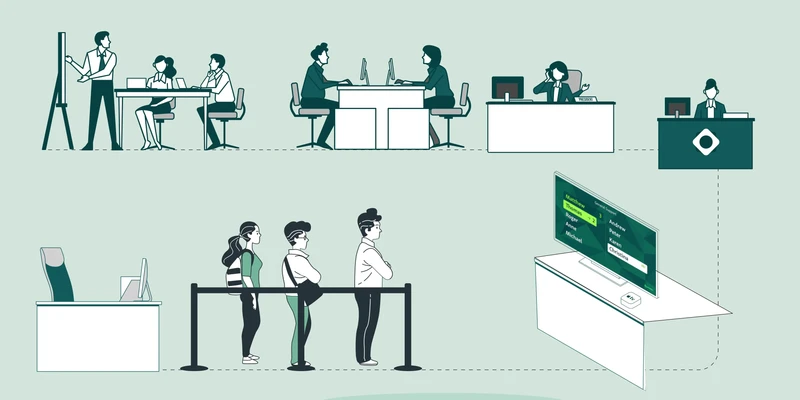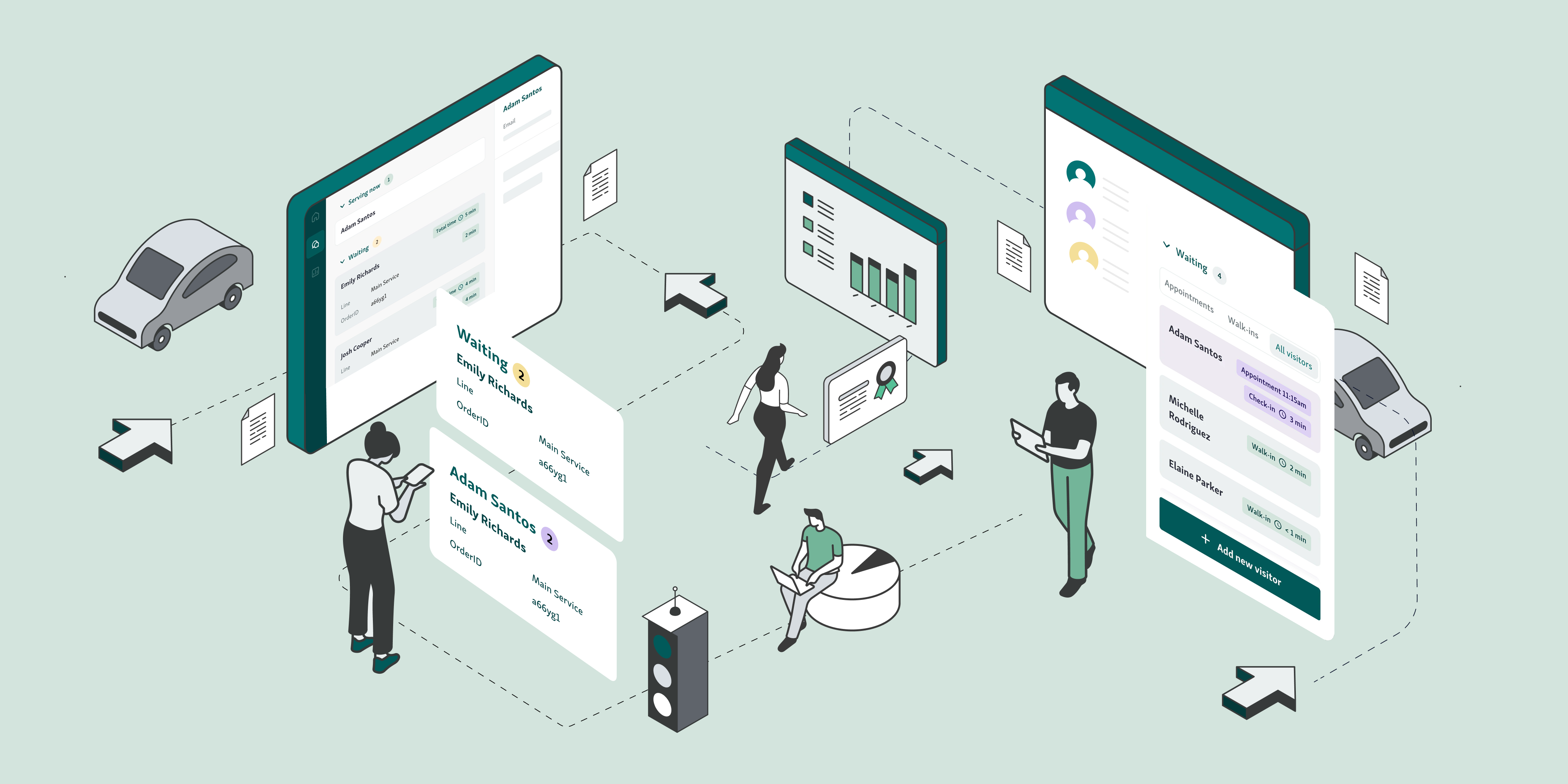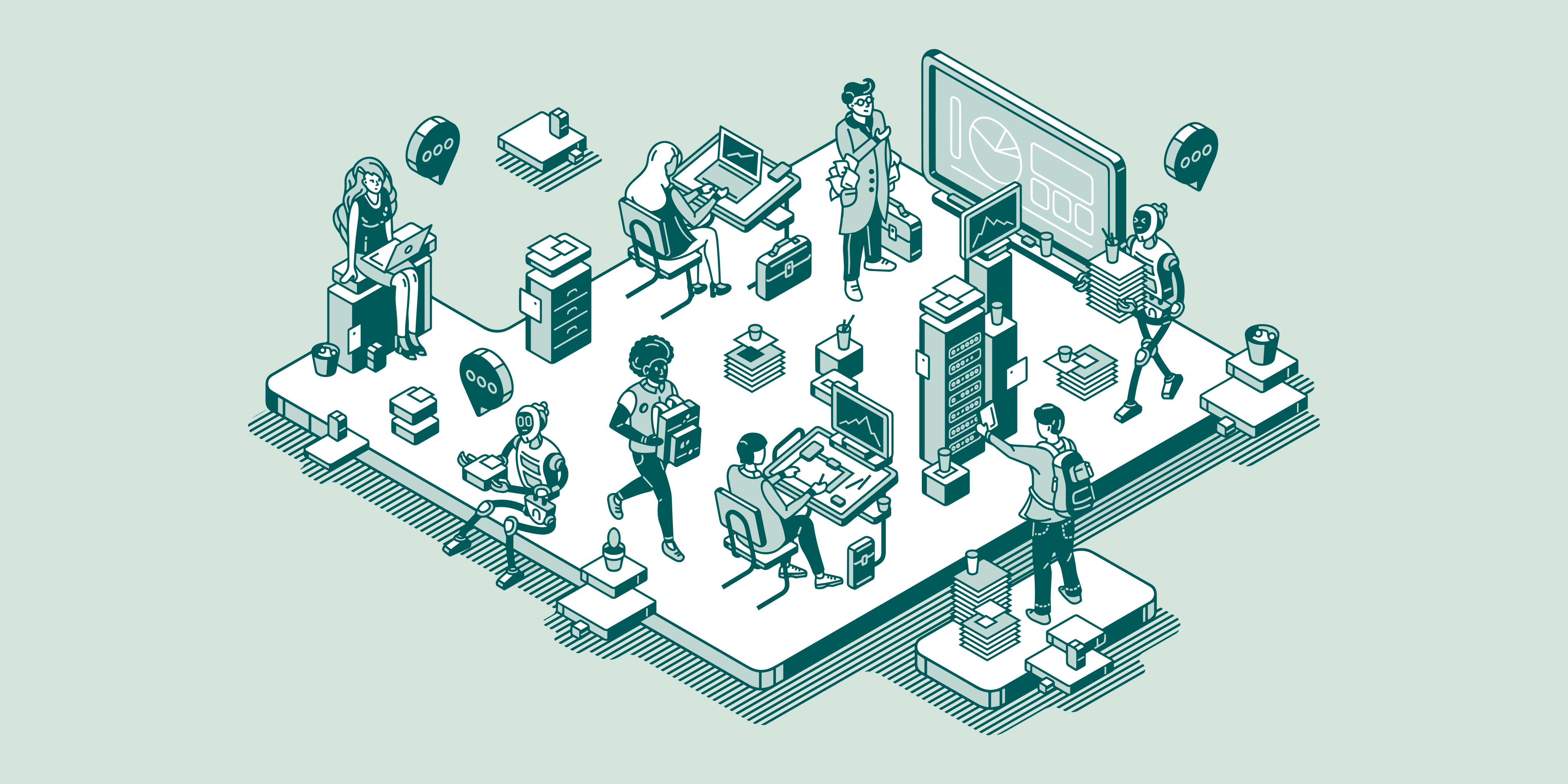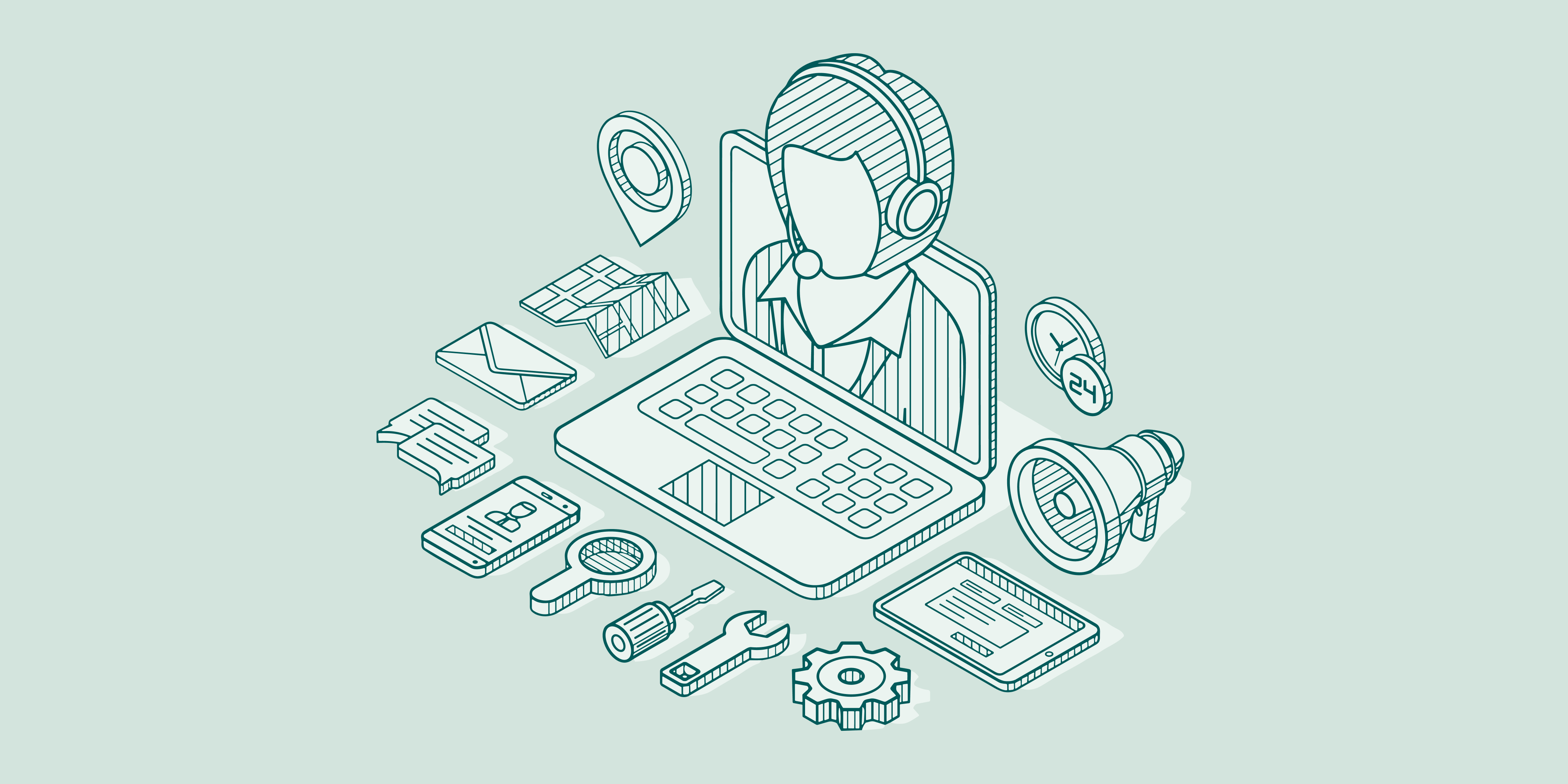Local government offices often face challenges such as high foot traffic, long wait times, and citizen dissatisfaction, which can lead to frustration and decreased trust in public services.
For instance, in 2021, citizen satisfaction with federal government services in the U.S. dropped to an all-time low of 63.4%, reflecting widespread concerns over service efficiency.
This highlights the urgent need for improvement in public service delivery.
Appointment queue software can address these issues by streamlining operations, reducing overcrowding, and improving the overall customer experience.
In this blog, we'll explore how these tools can help enhance citizen satisfaction, reduce wait times, and create a more efficient, predictable service environment in local government offices.
The Importance of Customer Satisfaction in Local Government Offices
Customer satisfaction is essential in local government offices as it influences public perception, trust, and operational efficiency.
Positive experiences encourage civic engagement and confidence in government services, while poor service leads to frustration, decreased trust, and disengagement.
Ensuring satisfaction is vital for effective service delivery and maintaining a strong relationship with the public.
Why Satisfaction Matters
Customer satisfaction directly impacts trust and engagement with local government. When citizens are satisfied, they are more likely to trust public services, participate in community activities, and support government initiatives.
Trust in Government: Satisfied citizens are more likely to trust and engage with local services.
Increased Civic Participation: Positive experiences encourage more involvement in community activities.
Operational Efficiency: Happy citizens contribute to smoother, more efficient service interactions.
Challenges Faced
Local government offices face several challenges, including overcrowding, long wait times, and outdated systems, which can lead to frustration and inefficiencies. These issues diminish public trust and create bottlenecks in service delivery.
Overcrowding: High foot traffic leads to long lines and frustration.
Long Wait Times: Extended waits negatively affect satisfaction.
Inefficient Scheduling: Outdated systems create delays and confusion.
The Need for Improvement
To address these challenges, adopting modern solutions like appointment scheduling systems can streamline operations. These tools reduce wait times, optimize staffing, and create a more efficient, organized service environment, improving citizen experiences and restoring trust.
Adopting Technology: Appointment scheduling tools can streamline processes and reduce congestion.
Improved Resource Management: These tools help allocate resources more effectively.
Enhanced Citizen Experience: A more predictable and organized service environment boosts satisfaction.
Implementing technology-driven solutions in local government offices is key to improving citizen satisfaction and operational efficiency.
Also read - Customer Satisfaction Metrics You Need to Be Tracking
How Appointment Queue Software Enhances Customer Satisfaction
Appointment queue software plays a key role in improving customer satisfaction by reducing wait times, providing better time management for citizens, and making service delivery more predictable. These systems help create a smoother, more organized experience, improving both the citizens' experience and the operational efficiency of local government offices.
1. Reduced Wait Times
Appointment scheduling helps spread out visits throughout the day, reducing overcrowding and long wait times. Tools like Qminder offer a waitlist monitor, with which office staff can track and manage appointments more effectively, ensuring no one is waiting too long and that service flows smoothly.
Spreads Visits: Helps distribute visitors evenly throughout the day, preventing congestion.
Cuts Wait Times: Minimizes the amount of time citizens spend in line.
Improved Efficiency: Prevents bottlenecks and ensures timely service for all visitors.
2. Better Time Management for Citizens
Appointment scheduling allows citizens to choose time slots that work best for them, eliminating the need for long waits in crowded waiting rooms. This feature empowers citizens to plan their visits around their own schedules, ensuring they don't waste time in government offices.
Convenient Planning: Citizens can pick times that fit into their schedules.
No Unnecessary Waiting: Reduces wasted time by providing clear time slots.
Better Experience: Personalized and flexible service that meets individual needs.
Predictable Service
By scheduling appointments, local government offices can make service delivery more predictable. Citizens can rely on accurate service times, and real-time notifications keep them informed of any updates or changes to their appointments, reducing uncertainty and frustration.
Clear Expectations: Citizens know exactly when to expect service, leading to less frustration.
Consistent Service Times: Reduces delays and ensures a more uniform service experience.
Better Communication: Real-time notifications keep citizens informed about their status in the queue.
Interesting read - Walk-in vs. Appointment Scheduling: Choosing the Best Approach
Key Features to Look for in Appointment Queue Software
When selecting appointment queue software, it’s essential to choose features that enhance convenience, streamline operations, and improve the overall experience for citizens. These key features will help optimize government services, reduce wait times, and ensure a smoother process for everyone involved.
1. Online Booking and Accessibility
Online booking systems are crucial for providing citizens with the flexibility to schedule appointments at their convenience. These systems are accessible to a wider range of people, including those who may not be able to visit the office in person or those who prefer managing appointments remotely.

With an online booking option, citizens can access the system anytime and from anywhere, significantly increasing convenience and reducing the likelihood of overcrowding in waiting areas.
2. Automated Reminders
Automated reminders, sent via email or SMS, help reduce no-shows by notifying citizens in advance about their upcoming appointments. These automated messages ensure that citizens are informed and prepared for their visit, leading to fewer missed appointments and better time management for both staff and customers.

By sending reminders at strategic times, such as the day before or a few hours before the scheduled appointment, these systems can keep operations running smoothly and maintain efficiency.
3. Real-Time Scheduling and Updates
Real-time scheduling and updates allow citizens to easily reschedule or cancel appointments as needed, without causing disruptions to the overall schedule. These systems provide flexibility, which is crucial for maintaining smooth operations and ensuring that appointments are consistently filled.

Real-time updates ensure that both citizens and staff are always informed about changes, helping to avoid confusion and ensure that the schedule remains on track.
You might also like - Staffing & Scheduling With a Queue Management System
4. Integration with Other Systems
For appointment queue software to be truly effective, it should seamlessly integrate with other systems, such as Customer Relationship Management (CRM) tools, databases, and ticketing systems.
Integration ensures that all relevant information is centralized, eliminating the need for manual data entry and reducing the risk of errors. It also improves resource management by allowing staff to easily access and update citizen information, resulting in a more organized, efficient, and streamlined service delivery.
Overcoming Common Barriers to Implementation
Adopting appointment scheduling tools in local government offices can present several challenges, including budget constraints, staff resistance to change, and the need for integration with existing systems. However, these barriers can be overcome with thoughtful planning and the right solutions.
1. Budget Constraints
Many local government offices face limited budgets, which can make adopting new technologies seem like a financial burden. However, there are affordable appointment scheduling tools specifically designed for small to mid-sized organizations.
These tools offer scalable options that fit within budget constraints while still providing the necessary features to enhance service delivery and efficiency. By focusing on cost-effective solutions, local governments can improve citizen satisfaction without breaking the bank.
Start with a cloud-based solution that requires no upfront hardware investment and has a low monthly fee, allowing for scalability as your needs grow.
2. Resistance to Change
One of the biggest challenges to implementing new technology is overcoming internal resistance. Staff members may be hesitant to adopt new systems, especially if they are accustomed to existing workflows.
To address this, it’s essential to foster a culture of innovation and customer-first thinking. Encourage staff involvement in the decision-making process and offer training sessions to ease the transition.
When employees understand how the new system will make their jobs easier and improve customer satisfaction, they are more likely to embrace the change.
Involve key staff in the early stages of implementation and provide clear communication about how the new tools will benefit both them and the citizens they serve.
3. Integration with Existing Systems
Another concern is the ability of new appointment scheduling tools to integrate seamlessly with legacy systems. Modern appointment scheduling solutions are designed to easily integrate with existing systems like CRMs, databases, and ticketing software.
This reduces the need for expensive and time-consuming overhauls. With proper integration, the new tools can enhance current workflows without disrupting ongoing operations, making the transition smoother and more efficient.
Choose appointment scheduling tools with open APIs or pre-built integrations that connect easily with your existing systems, reducing the complexity and cost of implementation.
Top 3 Appointment Queue Software for Local Government Offices
Choosing the right appointment queue software is crucial for improving service delivery and enhancing customer satisfaction in local government offices. Here are three top-rated appointment queue software solutions:
1. Qminder
Qminder is a simple, user-friendly queue management and appointment scheduling tool designed to help businesses and public sector agencies streamline customer check-ins and reduce wait times.
Visitors can easily check in through kiosks, mobile apps, or web-based platforms, while real-time SMS and app notifications keep them informed about their position in the queue.
The software also provides in-depth analytics and reports on visitor behavior, wait times, and staff performance, enabling organizations to enhance service delivery and optimize staffing.
Key Features:
Self-check-in options via kiosks, mobile apps, or web to reduce congestion.
Real-time notifications via SMS and apps to keep customers updated.
Visitor data collection and logs for insights into visitor behavior.
Customizable workflows tailored to business needs and service categories.
Multi-location support for managing queues across different offices or branches.
In-depth analytics and reporting on wait times, performance, and operational efficiency.
Easy integration with CRM, scheduling tools, and other software solutions.
2. Qmatic
Qmatic is a highly customizable queue management system that excels in integrating with various software and hardware solutions. It offers appointment scheduling, real-time notifications, and multi-location support, making it ideal for businesses with complex needs.
Key Features:
Appointment scheduling and advanced queue management.
Multi-location support with centralized monitoring.
Real-time notifications via SMS and digital signage.
Integration with CRM and scheduling tools.
Advanced analytics and reporting for performance insights.
3. Q-nomy
Q-nomy offers an advanced queue management system that is perfect for large organizations and businesses with multiple locations. The software provides full control over customer flow with features such as appointment scheduling, virtual queuing, and priority management.
Key Features:
Appointment scheduling, virtual queuing, and priority management.
Real-time notifications through SMS, email, and app alerts.
Customizable workflows and service categories.
Advanced reporting and analytics tools.
Multi-location support with centralized management.
Read more - Best Queue Management Systems in 2025
Take Action to Enhance Customer Satisfaction
Improving customer satisfaction in local government offices is essential for building trust, reducing wait times, and ensuring efficient service delivery.
Appointment queue software, with its ability to streamline operations, provide real-time updates, and manage high foot traffic, can significantly improve both the citizen experience and office efficiency.
Whether you choose Qminder for its user-friendly interface, Bookafy for flexibility, or Q-nomy for advanced customization, adopting the right appointment scheduling tool can transform your service.
For a comprehensive, easy-to-use solution, Qminder stands out as the ideal tool to enhance customer satisfaction and optimize service delivery in local government offices.
Customer satisfaction in government offices builds trust, improves public perception, and ensures more efficient service delivery, fostering a positive relationship with citizens.
Online appointment scheduling allows citizens to book times in advance, spreading visits throughout the day and minimizing overcrowding, which results in shorter wait times.
Appointment scheduling tools help staff allocate time effectively, reduce no-shows with reminders, and streamline service flow, allowing better resource management and less stress.






